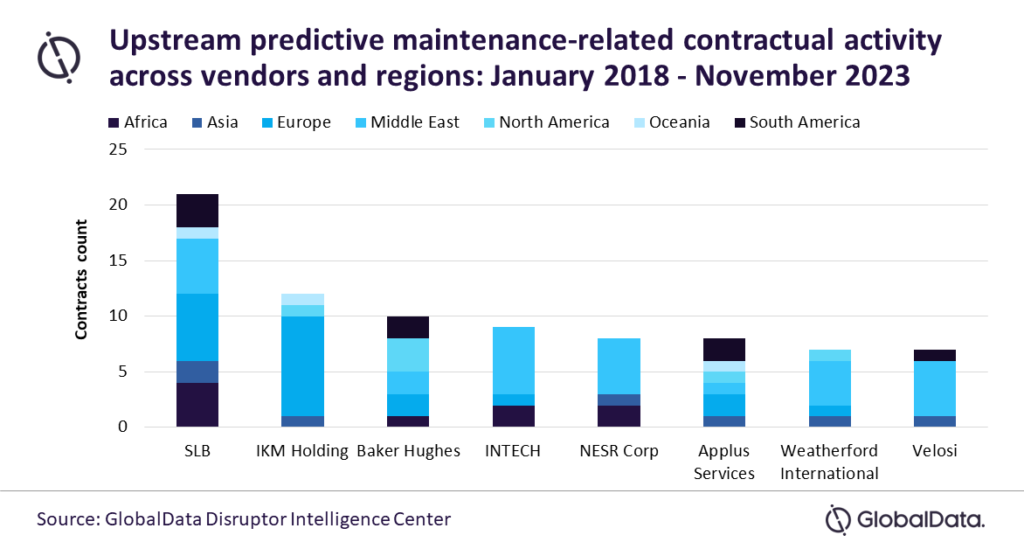Maintenance strategies in the oil and gas industry have gradually transformed from their early days in the nineteenth century. To achieve operational longevity, timely maintenance is necessary to prevent expensive repair works and unplanned production outages. Technologies, such as AI, machine learning, and the internet of things (IoT) add enormous value to predictive maintenance strategies, says GlobalData, the data and analytics company.
GlobalData’s thematic report, Predictive Maintenance in Oil and Gas, explores the use of predictive maintenance technologies in the oil and gas industry. It benchmarks the oil majors, such as BP, Chevron, ExxonMobil, TotalEnergies, and Shell, for their adoption of these technologies. It also identifies the various trends influencing the predictive maintenance theme.
Ravindra Puranik, Oil and Gas Analyst at GlobalData, comments: “Predictive maintenance enables decision-makers to schedule maintenance activities without affecting the normal functioning. These insights can also be utilised to determine whether any machinery or infrastructure requires a substantial overhaul. Predictive maintenance strategies have evolved in the oil and gas industry to harness newer digital technologies for improved prediction models.”
Apart from helping set up more agile operations in newer projects, predictive maintenance also helps extend the lifetime of aging assets. It also aids to detect unwanted leakages that contribute to emissions. Thus, it can help oil and gas companies to efficiently fulfil their ESG obligations. Predictive maintenance-related contractual activity depicted in the figure below showcases the diversity across vendors and region.
Predictive maintenance capability is becoming increasingly useful in the oil and gas industry due to competitive energy market scenarios. It helps maximise the operational life of the equipment and infrastructure by using an innovative data-driven approach to assess the state of the field equipment or infrastructure and provide a detailed picture of its expected operating life.
Puranik continues: “The proficiency of digital technologies has grown tremendously in the last few decades. The advancements in sensors, connectivity networks, and computing power, offer a strong foundation for the adoption of predictive maintenance strategies.”
Several prominent integrated oil companies (IOCs) have actively sought to digitalise their operations by employing technologies, such as AI, IoT, cloud computing, big data, and others. This has led to the generation of a vast amount of data from routine oil and gas operations. Growing digitalisation has facilitated the adoption of predictive maintenance technologies in the industry.
Puranik concludes: “A day of unplanned downtime of an oilfield, pipeline, or refinery can incur over a million dollars in losses for the operator. Predictive maintenance helps to identify potential problem areas and resolve them promptly. It could be profitable to implement enterprise-wide predictive maintenance strategies in the long-run.”
 Engineer News Network The ultimate online news and information resource for today’s engineer
Engineer News Network The ultimate online news and information resource for today’s engineer




